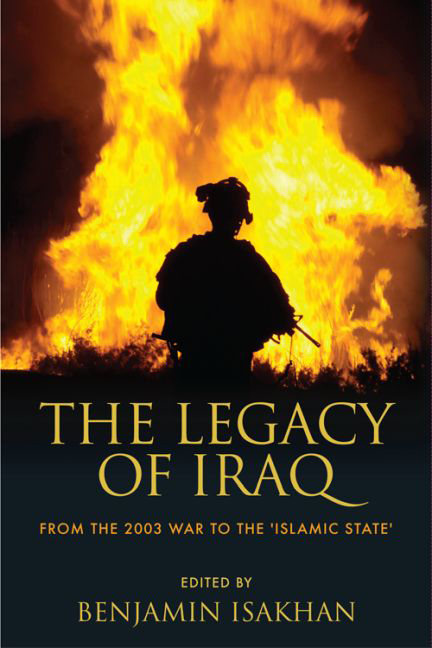Book contents
- Frontmatter
- Contents
- Acknowledgements
- Notes on Contributors
- Introduction: The Iraq Legacies – Intervention, Occupation, Withdrawal and Beyond
- Part I The Aftermath of War: Strategic Decisions and Catastrophic Mistakes
- Part II Iraqi Politics since Saddam
- Part III The Plight of Iraqi Culture and Civil Society
- Part IV Regional and International Consequences of the Iraq War
- 11 Ethnic Cleansing in Iraq: Internal and External Displacement
- 12 Shia Ascendency in Iraq and the Sectarian Polarisation of the Middle East
- 13 Humanitarian Intervention after Iraq: The Politics of Protection and Rescue
- 14 Iraq, the Illusion of Security and the Limits to Power
- Conclusion: The Iraq Legacies and the Roots of the ‘Islamic State’
- References
- Index
14 - Iraq, the Illusion of Security and the Limits to Power
from Part IV - Regional and International Consequences of the Iraq War
Published online by Cambridge University Press: 25 October 2017
- Frontmatter
- Contents
- Acknowledgements
- Notes on Contributors
- Introduction: The Iraq Legacies – Intervention, Occupation, Withdrawal and Beyond
- Part I The Aftermath of War: Strategic Decisions and Catastrophic Mistakes
- Part II Iraqi Politics since Saddam
- Part III The Plight of Iraqi Culture and Civil Society
- Part IV Regional and International Consequences of the Iraq War
- 11 Ethnic Cleansing in Iraq: Internal and External Displacement
- 12 Shia Ascendency in Iraq and the Sectarian Polarisation of the Middle East
- 13 Humanitarian Intervention after Iraq: The Politics of Protection and Rescue
- 14 Iraq, the Illusion of Security and the Limits to Power
- Conclusion: The Iraq Legacies and the Roots of the ‘Islamic State’
- References
- Index
Summary
The US military intervention in Iraq in March 2003 and the protracted violence it has unleashed constitute a defining moment of the post-Cold War period. Many have analysed this violence primarily in terms of the legality of the use of force (Bellamy 2003; Iwanek 2010; Paulus 2004) and its devastating impact on Iraqi society. Legitimate and important though it is, this line of inquiry is deficient if it does not adequately integrate into its analysis the regional and global ramifications of the violence, which are as enduring as they are wide-ranging. The international dimensions of the Iraq War, US occupation and subsequent US withdrawal are inextricably entwined with the devastating impact that the violence has had on Iraq's economy, environment and politics. With the exception of the unreconstructed political right in the United States, the US decision to intervene is now generally understood to have been illegal1 and illegitimate (McKeil 2012), but the reasons for the modalities and the consequences of that intervention have yet to be adequately contextualised. If we are to make sense of US actions in Iraq and the blowback effects of invasion and occupation, we need to place them in the context of two decisive tendencies in contemporary international life, namely the ‘globalisation of insecurity’ and the ‘limits to empire’ (Camilleri & Falk 2009: 446–65).
The globalisation of insecurity, which refers to the internationalisation of security relations, or to be more precise the transnationalisation of insecurity, is itself the product of several developments, in particular the increasing porosity of national boundaries and the destructiveness and global reach of modern warfare. At first sight the demise of the Cold War suggested a reversal of these trends. On closer inspection, it appears that the trend towards the transnationalisation of insecurity has continued unabated. Regardless of their official rationale, key US policies following the Cold War, notably the maintenance of alliances, the expansion of NATO, the creation of ad-hoc coalitions and military interventionism of various kinds, have powerfully contributed to the internationalisation of conflict.
- Type
- Chapter
- Information
- The Legacy of IraqFrom the 2003 War to the 'Islamic State', pp. 208 - 222Publisher: Edinburgh University PressPrint publication year: 2015

